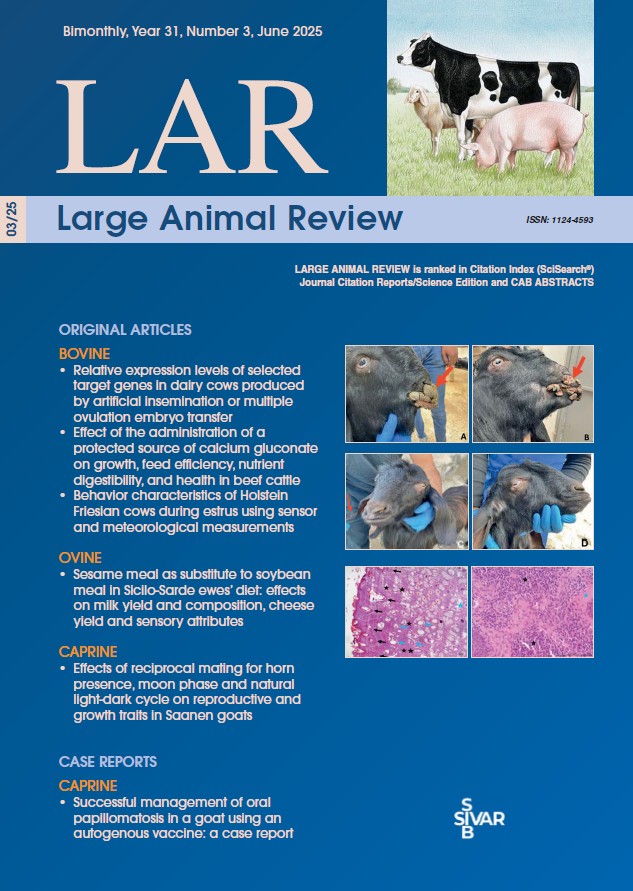Relative expression levels of selected target genes in dairy cows produced by artificial insemination or multiple ovulation embryo transfer
MOET and dairy cattle genetics
Abstract
Adoption of superovulation for in vivo production of cattle embryos has been one of the most successful reproductive biotechnologies among cattle breeders in order to produce male and female offspring of superior genetics. However, the effect of this technique on the performance of the resulting offspring is still unclear in terms of health, productivity and fertility. In this study, the primary objective was to evaluate the effect of artificial insemination (AI) and MOET heifer production protocols on the relative expression levels of 3 fertility-related genes (SAXO2, TAC3, and TFF2) in dairy cattle. This experiment was carried out on a total of ten primiparous Holstein cows belonging to a private dairy herd in north-western Egypt. Cows were divided into
two groups (MOET-cows, n=5) and (AI-cows, n=5). MOET-cows were produced by superovulation and embryo transfer, while AI-cows were produced by AI using conventional semen from approved sires. Both, MOET-cows and AI-cows were submitted to the presynch-ovsynch protocol on day 45 after their first calving and were timely inseminated on day 80 postpartum. Cows received two Prostaglandin f2 alpha injections (500 Ug cloprostenol sodium) on days 45 and 59 postpartum, then ovsynch protocol was applied on day 70 (first GnRH, 12 Ug busrelin), 77 (500 Ug cloprostenol sodium), 79 (12 Ug busrelin). Blood samples were obtained from individual cows on the day of timed artificial insemination (TAI) in the two groups. Relative expression levels of the target genes were determined by using qRT-PCR. Results showed significant associations between MOET heifer production technique and rising of relative expression levels of selected target genes (SAXO2, TAC3, and TFF2), where levels of the three genes were significantly greater in MOET-cows, compared to AI-cows suggesting upregulation of such genes in cows produced by MOET technique and may provide a partial explanation of the greater fertility observed in MOET-group.


